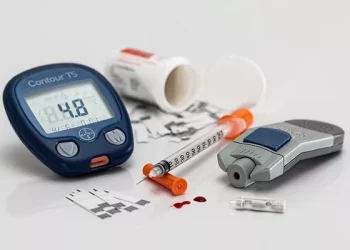In the landscape of chronic diseases, diabetes mellitus stands as a formidable adversary, affecting millions of individuals worldwide and posing significant challenges to healthcare systems globally. Central to the diagnosis and management of diabetes are its diverse array of symptoms, which serve as key indicators of underlying metabolic dysregulation and glucose intolerance. In this comprehensive article, we delve into the multifaceted spectrum of diabetes symptoms, exploring their diverse presentations, clinical significance, and implications for early detection, diagnosis, and management.
Introduction to Diabetes Mellitus:
Diabetes mellitus is a complex metabolic disorder characterized by chronic hyperglycemia resulting from impaired insulin secretion, insulin action, or both. The hallmark feature of diabetes is elevated blood glucose levels, which can lead to a myriad of short-term and long-term complications affecting various organ systems throughout the body. Diabetes is classified into several subtypes, including type 1 diabetes, type 2 diabetes, gestational diabetes, and other less common forms such as maturity-onset diabetes of the young (MODY) and latent autoimmune diabetes in adults (LADA).
Symptoms of Diabetes:
The symptoms of diabetes can vary depending on the type of diabetes, the severity of hyperglycemia, and individual factors such as age, genetic predisposition, and comorbidities. However, there are common symptoms shared across different types of diabetes, which serve as key clinical clues for healthcare providers in the diagnostic process. These symptoms include:
1. Polyuria (Excessive Urination):
- Polyuria refers to increased urine production and frequent urination, often accompanied by nocturia (excessive urination at night).
- Mechanism: Elevated blood glucose levels exceed the renal threshold for glucose reabsorption, leading to glucose spillage into the urine and osmotic diuresis.
- Clinical Significance: Polyuria is a cardinal symptom of diabetes mellitus, reflecting hyperglycemia-induced osmotic diuresis and dehydration.
2. Polydipsia (Excessive Thirst):
- Polydipsia manifests as excessive thirst and fluid intake, a physiological response to dehydration resulting from polyuria.
- Mechanism: Dehydration and extracellular fluid volume depletion trigger thirst receptors in the hypothalamus, stimulating sensations of thirst.
- Clinical Significance: Polydipsia often accompanies polyuria in diabetes mellitus and serves as a compensatory mechanism to maintain hydration.
3. Polyphagia (Excessive Hunger):
- Polyphagia is characterized by increased appetite, hunger, and food intake despite elevated blood glucose levels.
- Mechanism: Cellular energy deprivation due to impaired insulin action or insulin deficiency triggers hunger signals and stimulates appetite.
- Clinical Significance: Polyphagia reflects metabolic disturbances in diabetes mellitus and may contribute to weight gain and hyperphagia.
4. Weight Loss:
- Unintentional weight loss may occur in individuals with diabetes, particularly in type 1 diabetes or poorly controlled type 2 diabetes.
- Mechanism: Insulin deficiency or insulin resistance impairs glucose utilization by cells, leading to increased breakdown of fat and protein stores for energy.
- Clinical Significance: Weight loss in diabetes may result from muscle wasting, fluid loss, and metabolic changes associated with chronic hyperglycemia.
5. Fatigue and Weakness:
- Fatigue, weakness, and lethargy are common symptoms reported by individuals with diabetes, often related to fluctuations in blood glucose levels and metabolic disturbances.
- Mechanism: Chronic hyperglycemia, insulin resistance, and cellular energy deprivation contribute to fatigue and reduced physical endurance.
- Clinical Significance: Fatigue in diabetes may impact daily functioning, quality of life, and adherence to self-management behaviors such as physical activity and medication adherence.
6. Blurred Vision:
- Blurred vision or changes in visual acuity may occur in individuals with diabetes, particularly when blood glucose levels are poorly controlled.
- Mechanism: Hyperglycemia and osmotic changes in the lens of the eye can lead to alterations in refractive index and visual disturbances.
- Clinical Significance: Blurred vision may indicate the presence of diabetic retinopathy, macular edema, or other diabetes-related eye complications requiring prompt evaluation and management.
7. Slow Wound Healing:
- Delayed wound healing and impaired tissue repair are common manifestations of diabetes, attributable to microvascular and macrovascular complications.
- Mechanism: Chronic hyperglycemia, impaired angiogenesis, and reduced immune function contribute to impaired wound healing in diabetes.
- Clinical Significance: Slow wound healing increases the risk of infections, ulcers, and diabetic foot complications, necessitating meticulous wound care and preventive measures.
8. Recurrent Infections:
- Recurrent infections, particularly of the skin, urinary tract, and oral cavity, are more common in individuals with diabetes due to impaired immune function and compromised host defense mechanisms.
- Mechanism: Hyperglycemia impairs neutrophil function, macrophage activity, and humoral immunity, predisposing individuals to infections.
- Clinical Significance: Recurrent infections may serve as early indicators of undiagnosed or poorly controlled diabetes and require comprehensive evaluation and management to prevent complications.
Conclusion:
The symptoms of diabetes mellitus encompass a diverse array of clinical manifestations reflecting underlying metabolic disturbances, hormonal imbalances, and end-organ complications. Recognizing and addressing these symptoms is essential for timely diagnosis, appropriate management, and prevention of diabetes-related complications. By raising awareness, promoting early detection, and implementing comprehensive care strategies, healthcare providers can empower individuals with diabetes to achieve optimal glycemic control, enhance quality of life, and reduce the burden of diabetes-related morbidity and mortality.



























